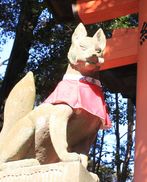What is a genre?
Genres began when Aristotle developed an absolute classification for Greek Literature: they’ve evolved.
Today, genre is an ever-expanding way to group books. Genres are used by librarians and booksellers to group books on shelves. They’re also a strong marketing tool and set readers expectations.
Genre fiction can be broken into a multitude of categories, including: comedy; fantasy; science fiction; climate fiction; dystopia; erotica; horror; crime; thriller; historical; romance; western; war; spy; and so on…the list is ever changing.
By blending genres, we create opportunities for new ways to tell stories. For example, science fantasy: where technology and magic coexist, and space opera: where science fiction, fantasy and drama can coexist.
How to blend
It’s important to start with a base genre. At its core what is the plot of your story about? Once the base is established other genres can be overlaid. It’s important that the secondary genres enrich, but don’t overpower the base genre. Each element must play a part in the plot or contribute to character development.
In my collection, Letters From Elsewhere, the story, Moths to the Flame, is at its heart a science fiction story with elements of fantasy, erotica and historical fiction.
Why blend?
Multiple genres can add depth to the plot. Readers don’t want to just know the science in science fiction, they want to know how it impacts the characters. Characters come alive. A detective story is one thing, but what if she’s having to deal with the challenges of being married to a vampire? By blending genres, the world gets bigger. We can create a universe where everything is not as it seems.
But the most important thing is to write a good story. All the genres in the world won’t make up for poor character development, weak world building or a lack of plot.


 RSS Feed
RSS Feed